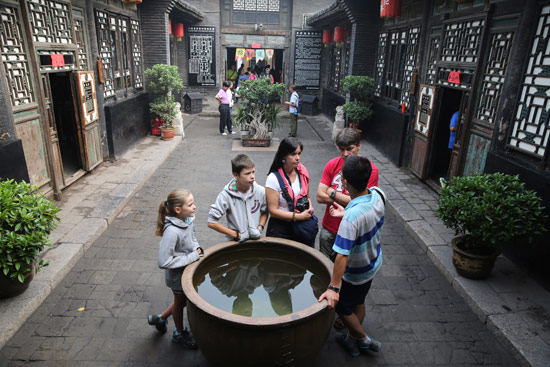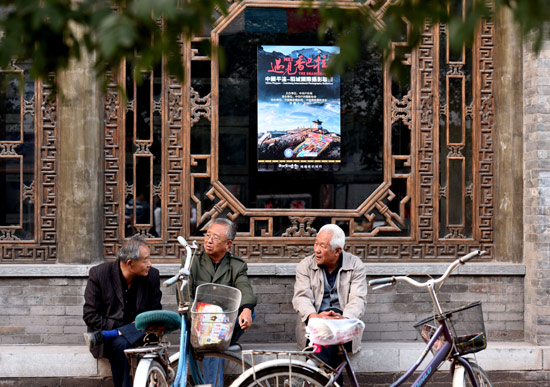The ruts left by the caravan of merchants in Shanxi province hundreds of years ago are well-preserved in Pingyao Ancient City. Those diligent Shanxi-based merchants began with businesses like tea and salt trade before they established piaohao, or draft bank, throughout the country to become an influential part of China's ancient commercial history.
As a business and financial hub at that time, Pingyao saw the best of times when business in the city was booming in the Qing Dynasty (1644-1911). It was the birthplace of China’s first bank, Rishengchang.
 |
|
Several foreign visitors listen to the guide's introduction of Rishengchang bank, in the Ancient City of Pingyao. [Photo/asianewsphoto.com] |
Pingyao was hailed as the "City of Piaohao" because at its peak, there were more than 20 financial institutions in the city, more than half of the national total at that time, making Shanxi merchants the most influential in the Qing Dynasty.
Time has moved forward, but not the wealth and glory. Pingyao declined at the end of the Qing Dynasty.
Pingyao Ancient City has kept many ancient structures and ruins and was listed as a World Heritage Site by UNESCO in the 1990s. Thriving tourism boosts this ancient city with new vitality as large numbers of tourists flood from all over the world to admire its time-honored beauty.
On Sept 20, 2001, Pingyao held the first International Photography Festival. From then on, the photography festival has attracted more and more photographers and, through their photos, made the city known to more people in other parts of the world.
 |
|
Three Pingyao locals talk in front of a poster of Pingyao International Photography Festival. [Photo/Xinhua] |
The photography festival has shortened the distance between Pingyao and the world, said Lei Ming, a local resident.
While becoming increasingly known to the outside world, people in Pingyao have also been influenced by the new thoughts and information accompanying incoming visitors, though sometimes unconsciously.
Liu Wentao, a fan of ancient weapons living in Pingyao, operates an ancient weapons museum in the city. Liu has not only set his eyes on domestic visitors. He has made use of the Internet to set up a website for his museum, reaching out to people in other countries. His collections have been exhibited in countries and regions like Italy, Switzerland and Taiwan. Some foreign fans followed the museum on the Internet.
Pingyao is small in size, but global in sight, Liu said.
A French woman, whose Chinese name is Bai Meixian, jokingly said she was perhaps a Pingyao resident in her previous life.
She has travelled a lot in China, but she said she loves nowhere else as much as Pingyao. Bai first visited Pingyao as a participant in the Pingyao International Photography Festival. In 2012, she began to record common life in the city through her lens, making friends with the locals.
Fourteen years after it held the first international photography festival, Pingyao now has become an indispensable venue for many photographers, said Zhang Guotian, art director of the Pingyao International Photography Festival, since 2011.
Edited by Michael Thai